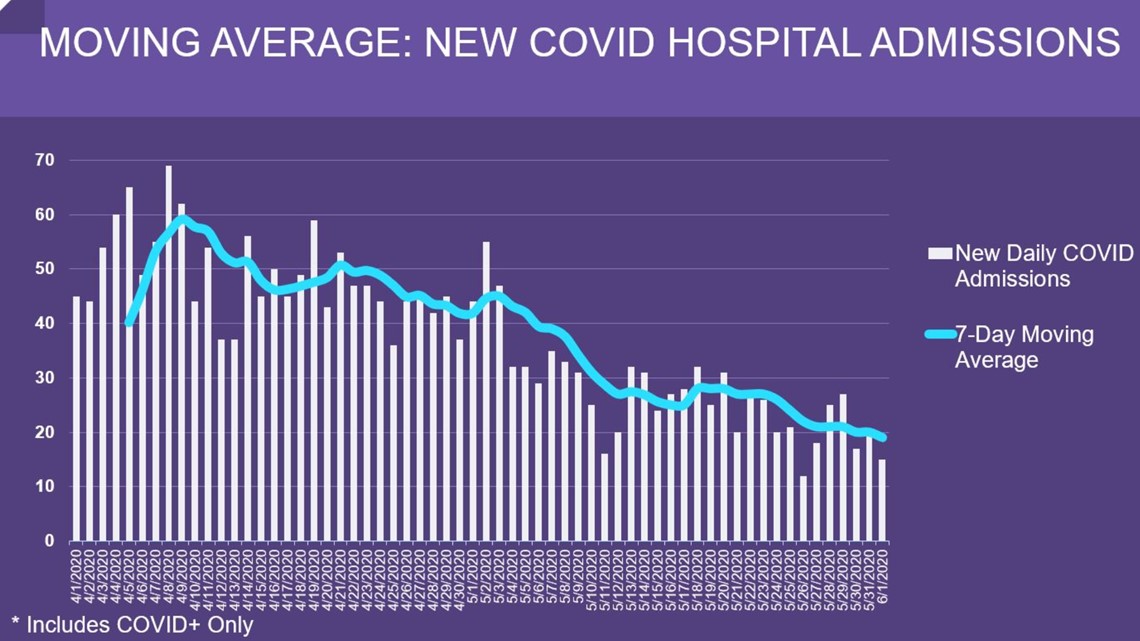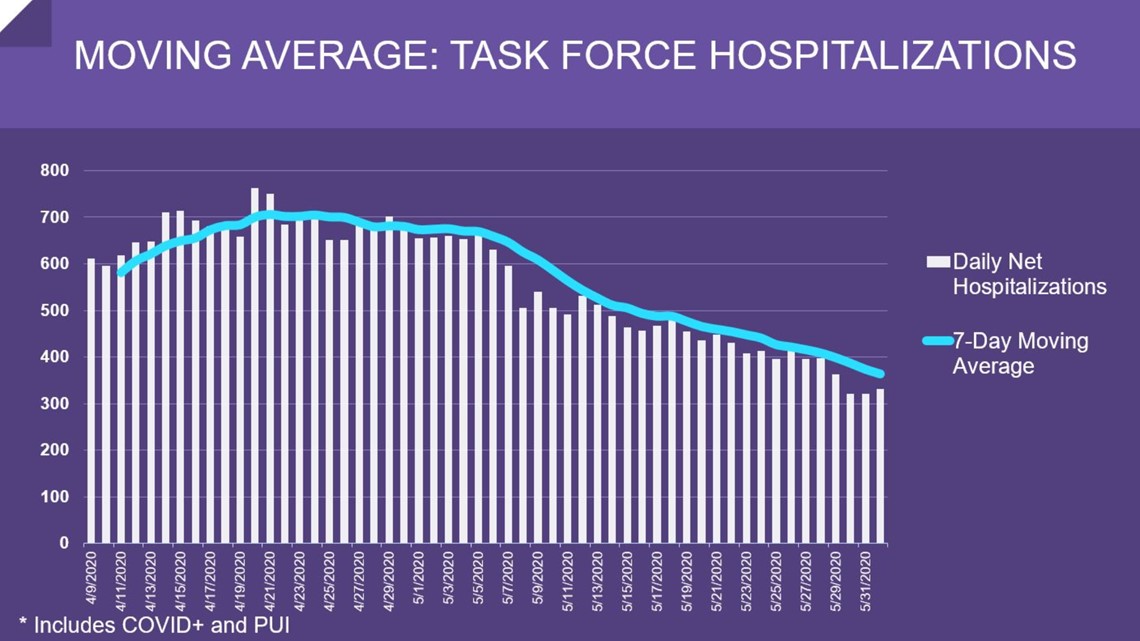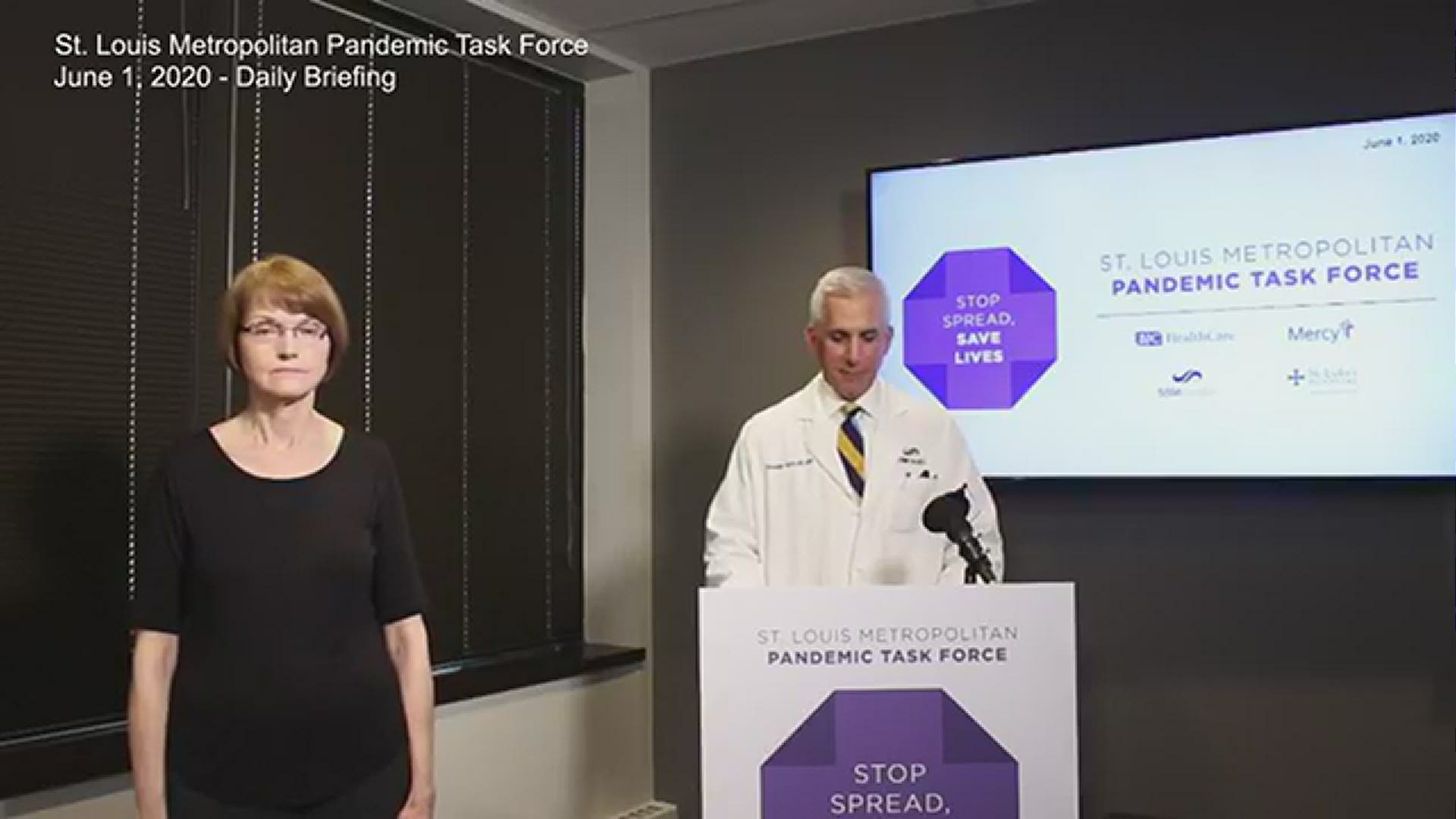ST. LOUIS — The latest COVID-19 data trends continue to move in the right direction in the St. Louis area, the incident commander of St. Louis Metropolitan Pandemic Task Force reported Monday.
“The progress in this region has been really incredible,” said Dr. Alex Garza. “We’ve been keeping the right measures in place, helping us prevent spread while we continue to gradually reopen the economy and people are out and able to move around more.”
Despite the good news to report, Dr. Garza still stressed that now is not the time to relax and let down our collective guards. He said one of the best things everyone can and should do is wear a mask.
“But this only works if everyone is doing it,” he explained, saying it’s a simple, low-barrier tool we can all do to keep ourselves and each other safe.
The seven-day moving averages of the number of new COVID-19 patients in task force hospitals and the total number of COVID-19 patients both hit their lowest marks yet on Monday.
“All of our numbers continue to show nice progress over time,” Dr. Garza added.
The task force reported 15 new COVID-19 patients in St. Louis area hospitals. The seven-day average dropped down from 20 people a day to 19.
The graph below shows the both the daily (white bars) and seven-day average (blue line) of new coronavirus patients who checked in to task force hospitals.


The seven-day average of total coronavirus patients in the hospital went from 373 people down to 363.
The graph below shows both the daily (white bars) and seven-day average (blue line) of total COVID-19 patients who are being treated at task force hospitals.


The full breakdown of data trends from the task force is below.
- New hospital admissions: 15, down from 18
- Seven-day moving average of new hospital admissions: 19, down from 20
- Hospitalizations: 331, up from 321
- Seven-day moving average of hospitalizations: 363, down from 373
- Patients in the ICU: 78, down from 87
- Patients on ventilators: 53, up from 47
Over the last 24 hours, five COVID-19 patients were released from task force hospitals, bringing the total to 2,2,287 COVID-19 patients sent home to recover since the first case was reported in the area. Over the last week, there were 162 patients released.
8 steps to stay healthy as cities reopen
For weeks now, Dr. Garza has stressed the importance of social distancing, frequently washing hands and cleaning surfaces. He said as economies and businesses reopen, it’s especially important to continue those practices that helped slow the spread of COVID-19 in the St. Louis area.
“We also know that we’re never going to be at zero transmission until there’s a vaccine. So, we have to learn how to live with the virus and take all those important steps to keep it in check,” Dr. Garza said.
To help keep the coronavirus in check in the St. Louis area, Dr. Garza offered these eight steps to keep yourself, your loved ones and the entire community safe.
- Stay 6 feet apart from others – the exception being those you live with
- Wear a face mask in public
- Wash your hands frequently with soap and water for at least 20 seconds
- Clean surfaces regularly, including phones, counters, light switches – anything that’s touched frequently
- Monitor yourself for signs of illness, contact your doctor if you’re experiencing COVID-19 symptoms
- Don’t gather with more than 10 people
- Stay at home if you’re vulnerable or at high risk of infection
- Don’t visit nursing homes or assisted-living facilities
“These are the steps we all need to make to keep the transmission rate low and to prevent the new surge in cases,” Dr. Garza said.

